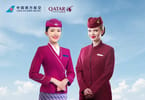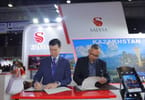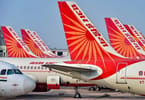A Japanese airline making money?
Skymark Airlines isn’t a household name, even in Japan. But taking cues from its low-cost counterparts around the world, it will do what the big Japanese carriers — Japan Airlines and All Nippon Airways — won’t this fiscal year: turn a profit.
Investors who sniffed out this small stock, listed on Tokyo’s Mothers exchange for start-ups, have been rewarded handsomely. Shares have nearly quadrupled in price over the past year.
What is Skymark doing right? The carrier, which started flying in 1998, has streamlined its fleet over the last few years to a single jet type — one that has become a standard among low-cost carriers, the Boeing 737.
That model is both smaller and more fuel-efficient than the 767 Skymark once flew, which means it needs fewer passengers to break even and has fewer empty seats on each flight. In the first half through September, Skymark’s load factor was 76.3%, much higher than the 63.3% in March 2007, when the majority of its fleet was the 100-seat larger 767.
Equally important, greater plane varieties translate into higher maintenance, spare-parts and training costs. Its maintenance costs dropped as a percentage of revenue from 21% to 13% during the same period.
Another factor is lower total labor costs. Skymark has staffers trained to do different jobs, such as employees who act as flight attendants, check passengers in and clean planes. That also means less need for extra cabin staff on standby.
There’s an opportunity ahead, too. As JAL drops money-losing domestic routes, Skymark and other small start-ups could step in and make them profitable.
Its price gain has been whopping, but Skymark still trades at less than 12 times expected earnings, according to data provider Starmine. It’s not just investors who might want to take a closer look. Tokyo ought to consider Skymark’s successes as it looks to cut JAL’s heavy burden.
WHAT TO TAKE AWAY FROM THIS ARTICLE:
- The carrier, which started flying in 1998, has streamlined its fleet over the last few years to a single jet type —.
- That model is both smaller and more fuel-efficient than the 767 Skymark once flew, which means it needs fewer passengers to break even and has fewer empty seats on each flight.
- Skymark has staffers trained to do different jobs, such as employees who act as flight attendants, check passengers in and clean planes.






















